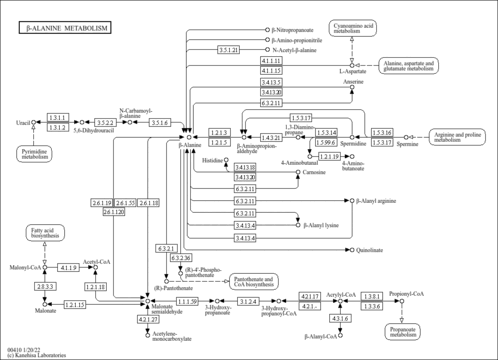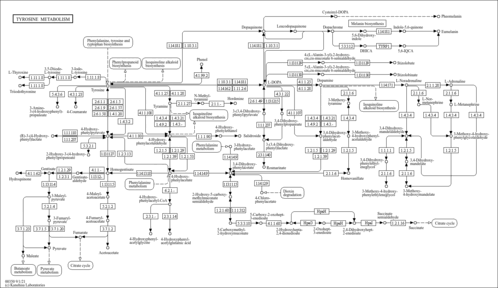| Record Information |
|---|
| Version | 1.0 |
|---|
| Created at | 2020-04-17 19:27:28 UTC |
|---|
| Updated at | 2020-12-07 19:11:53 UTC |
|---|
| CannabisDB ID | CDB005281 |
|---|
| Secondary Accession Numbers | Not Available |
|---|
| Cannabis Compound Identification |
|---|
| Common Name | Copper |
|---|
| Description | Copper, also known as cu(ii) or copper (II) ion, belongs to the class of inorganic compounds known as homogeneous transition metal compounds. These are inorganic compounds containing only metal atoms,with the largest atom being a transition metal atom. Copper is a weakly acidic compound (based on its pKa). Copper exists in all living species, ranging from bacteria to humans. In humans, copper is involved in disulfiram action pathway. Outside of the human body, Copper has been detected, but not quantified in, several different foods, such as brussel sprouts, chicory roots, rosemaries, lemon grass, and roman camomiles. This could make copper a potential biomarker for the consumption of these foods. Copper is a potentially toxic compound. Copper, with regard to humans, has been found to be associated with several diseases such as mental retardation, enteropathy, deafness, peripheral neuropathy, ichthyosis, and keratoderma, occipital horn syndrome, and parkinson's disease; copper has also been linked to several inborn metabolic disorders including hyperzincaemia and hypercalprotectinaemia and menkes disease. Copper is expected to be in Cannabis as all living plants are known to produce and metabolize it. |
|---|
| Structure | |
|---|
| Synonyms | | Value | Source |
|---|
| COPPER (II) ion | ChEBI | | Copper(II) cation | ChEBI | | Copper, ion (cu2+) | ChEBI | | Cu(II) | ChEBI | | Cu2+ | ChEBI | | Cu(2+) | ChEBI | | Cupric ion | ChEBI | | Cu | HMDB |
|
|---|
| Chemical Formula | Cu |
|---|
| Average Molecular Weight | 63.55 |
|---|
| Monoisotopic Molecular Weight | 62.9296 |
|---|
| IUPAC Name | copper(2+) ion |
|---|
| Traditional Name | copper(2+) ion |
|---|
| CAS Registry Number | 7440-50-8 |
|---|
| SMILES | [Cu++] |
|---|
| InChI Identifier | InChI=1S/Cu/q+2 |
|---|
| InChI Key | JPVYNHNXODAKFH-UHFFFAOYSA-N |
|---|
| Chemical Taxonomy |
|---|
| Description | Belongs to the class of inorganic compounds known as homogeneous transition metal compounds. These are inorganic compounds containing only metal atoms,with the largest atom being a transition metal atom. |
|---|
| Kingdom | Inorganic compounds |
|---|
| Super Class | Homogeneous metal compounds |
|---|
| Class | Homogeneous transition metal compounds |
|---|
| Sub Class | Not Available |
|---|
| Direct Parent | Homogeneous transition metal compounds |
|---|
| Alternative Parents | Not Available |
|---|
| Substituents | - Homogeneous transition metal
|
|---|
| Molecular Framework | Not Available |
|---|
| External Descriptors | |
|---|
| Ontology |
|---|
|
| Physiological effect | Health effect: |
|---|
| Disposition | Route of exposure: Source: Biological location: |
|---|
| Role | Environmental role: Biological role: |
|---|
| Physical Properties |
|---|
| State | Solid |
|---|
| Experimental Properties | | Property | Value | Reference |
|---|
| Melting Point | 1083 °C | Not Available | | Boiling Point | Not Available | Not Available | | Water Solubility | Not Available | Not Available | | logP | Not Available | Not Available |
|
|---|
| Predicted Properties | [] |
|---|
| Spectra |
|---|
| EI-MS/GC-MS | Not Available |
|---|
| MS/MS | | Type | Description | Splash Key | View |
|---|
| Predicted MS/MS | Predicted LC-MS/MS Spectrum - 10V, Positive | splash10-03di-9000000000-59c652eccc13cc365f65 | 2016-08-01 | View Spectrum | | Predicted MS/MS | Predicted LC-MS/MS Spectrum - 20V, Positive | splash10-03di-9000000000-59c652eccc13cc365f65 | 2016-08-01 | View Spectrum | | Predicted MS/MS | Predicted LC-MS/MS Spectrum - 40V, Positive | splash10-03di-9000000000-59c652eccc13cc365f65 | 2016-08-01 | View Spectrum | | Predicted MS/MS | Predicted LC-MS/MS Spectrum - 10V, Negative | splash10-03di-9000000000-9acd78ab9faeb89677a7 | 2016-08-03 | View Spectrum | | Predicted MS/MS | Predicted LC-MS/MS Spectrum - 20V, Negative | splash10-03di-9000000000-9acd78ab9faeb89677a7 | 2016-08-03 | View Spectrum | | Predicted MS/MS | Predicted LC-MS/MS Spectrum - 40V, Negative | splash10-03di-9000000000-9acd78ab9faeb89677a7 | 2016-08-03 | View Spectrum |
|
|---|
| NMR | Not Available |
|---|
| Pathways |
|---|
| Pathways | | Name | SMPDB/Pathwhiz | KEGG | | Beta-Alanine Metabolism |    |  | | GABA-Transaminase Deficiency |    | Not Available | | Ureidopropionase Deficiency |    | Not Available | | Carnosinuria, carnosinemia |    | Not Available | | Catecholamine Biosynthesis |    |  |
|
|---|
| Protein Targets |
|---|
| Enzymes | |
|---|
| Transporters | |
|---|
| Metal Bindings | |
|---|
| Receptors | |
|---|
| Transcriptional Factors | |
|---|
| Concentrations Data |
|---|
| |
| Alien Dawg | Detected and Quantified | 0.002 mg/g dry wt | | details | | Gabriola | Detected and Quantified | 0.015 mg/g dry wt | | details | | Island Honey | Detected and Quantified | 0.009 mg/g dry wt | | details | | Quadra | Detected and Quantified | 0.014 mg/g dry wt | | details | | Sensi Star | Detected and Quantified | 0.006 mg/g dry wt | | details | | Tangerine Dream | Detected and Quantified | 0.002 mg/g dry wt | | details |
|
|---|
| External Links |
|---|
| HMDB ID | HMDB0000657 |
|---|
| DrugBank ID | Not Available |
|---|
| Phenol Explorer Compound ID | Not Available |
|---|
| FoodDB ID | FDB030749 |
|---|
| KNApSAcK ID | Not Available |
|---|
| Chemspider ID | 25221 |
|---|
| KEGG Compound ID | C00070 |
|---|
| BioCyc ID | CU%2b2 |
|---|
| BiGG ID | Not Available |
|---|
| Wikipedia Link | Copper |
|---|
| METLIN ID | Not Available |
|---|
| PubChem Compound | 27099 |
|---|
| PDB ID | Not Available |
|---|
| ChEBI ID | 29036 |
|---|
| References |
|---|
| General References | Not Available |
|---|

